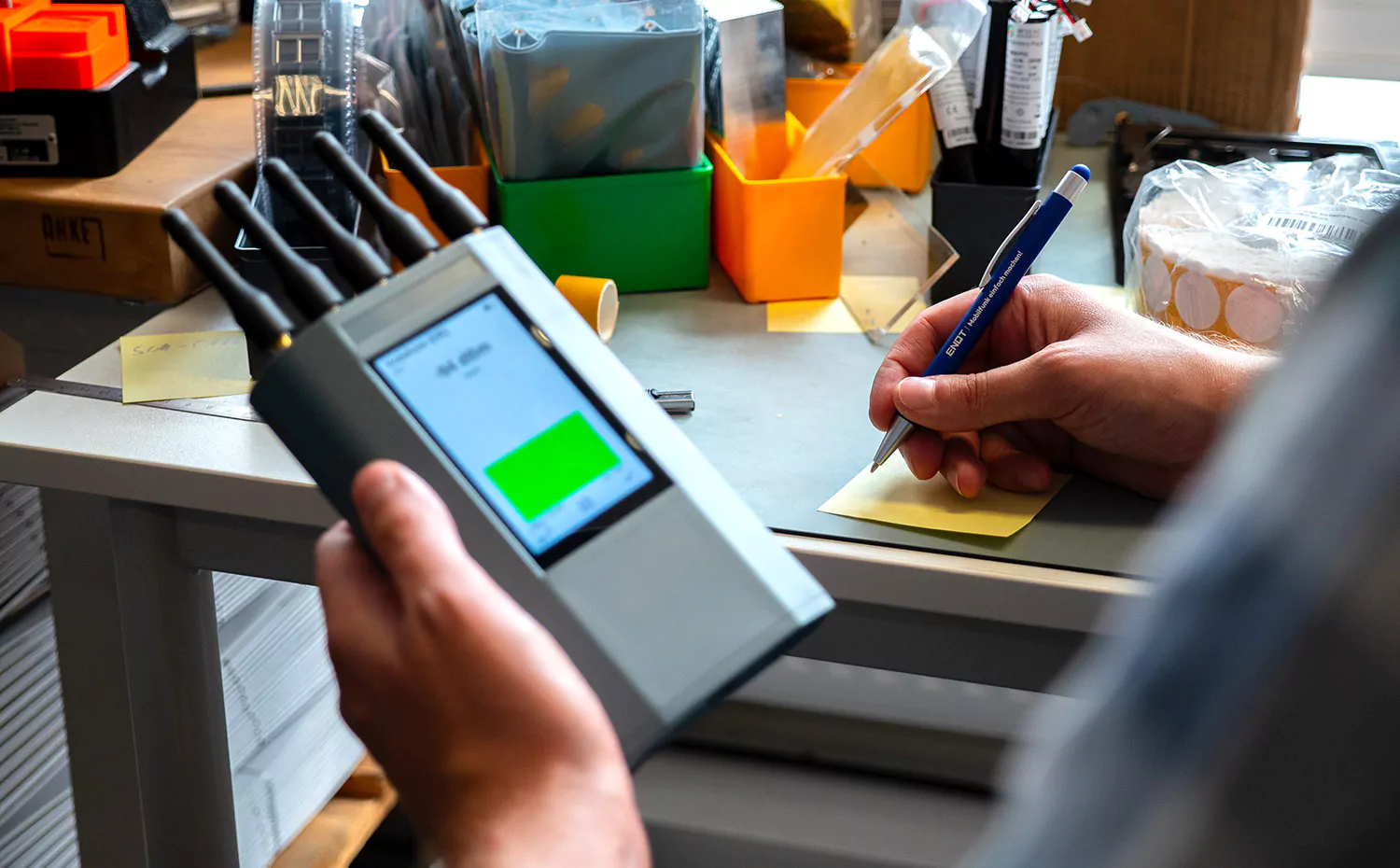In recent weeks, we have already looked at general areas of application in Industry 4.0 and specific case studies from the energy industry. In this article, we now want to take a closer look at the construction industry, discuss the relevance of mobile applications in this specific industry, and give some concrete case studies.
So far, digitization in the construction industry has progressed only slowly. This could be due, among other things, to the good order situation and consequently strong workload of the companies: There is a lack of time to plan and implement digitization projects. More efficient processes are urgently needed: According to a study by McKinsey, construction workers spend an average of up to 70% of their working time not on actual construction tasks, but on transport, material procurement and construction activities. Here, mobile-based, digitized and automated processes could offer enormous advantages, as they have the potential to support the needed increase in efficiency, speed up the execution of construction projects, and reduce overall costs.
Application example: Video surveillance of the construction site
A comparatively simple application of mobile communications in the construction industry is video surveillance using intelligent systems. These are now used on most construction sites. Surveillance systems not only monitor construction progress, but also prevent theft and the like.
Camera systems connected to the Internet of Things enable round-the-clock monitoring of the site. Via mobile communications, the resulting recordings can be automatically transmitted to the providers of the security systems and stored on their servers. Real-time transmission, which all users can access at any time via their smartphone or tablet, is also possible using wireless technology. Restricted access, for which access data is required, ensures the necessary security.
Control of the surveillance system is also possible via mobile communication. Networking the cameras with intelligent image processing systems also enables direct evaluation of the data collected. Conspicuous behavior or special events are detected independently and in real time, and the security center can be alerted automatically if necessary. Thus, thanks to mobile communications, seamless monitoring of all construction sites is technically possible.
Application example: Monitoring and networking of construction machinery
The development and spread of intelligent construction machines is currently on the advance. Such machines can be connected to each other or to company headquarters, monitoring or control elements via the Internet of Things.
GPS applications in particular are often used here: connected via mobile communications, equipment, materials and machines can be monitored remotely. Even with simple applications, it is possible to determine the position in real time, to transmit travel speeds and routes, and thus to determine the utilization of the respective device. This allows predictive maintenance of the machines and efficiency-optimized use of the fleet.
Mobile communications not only enable machines to communicate with each other, but also make it easier for people to control heavy construction machinery. For this purpose, many manufacturers are developing intelligent driver’s cabs that are equipped with a central control display. Devices such as ultrasonic and video sensors can perform precise monitoring of the environment, thus increasing safety in the workplace. Intelligent systems enable the comprehensive integration of such assistance applications. Tasks can thus be partially automated. The driver’s cab acts as a central interface through which all data can be called up and processes coordinated with a mere tap of the finger on the display.
It is also possible to use robots on construction sites: they can transport materials and equipment to where they are needed at the moment. This allows workers to concentrate on essential construction tasks. This saves time and physical labor, and ultimately money.
Application example: Surveying work
Surveying is another task area whose digitization is made possible thanks to networked construction machines. Such intelligent surveying work is a prime example of the increased efficiency that is so urgently needed, especially in the construction industry.
Traditional surveying, where a team of specialists travels from project to project, is very costly and time-consuming. Yet, ongoing documentation of construction progress is important for keeping projects on schedule and on budget. For this reason, more efficient processes in surveying can positively influence the entire construction process.
Various companies are currently developing innovative methods for construction site documentation in which smartphones and mobile communications play a key role. Such surveying processes are not only uncomplicated and quick to carry out, they are also very accurate: GPS applications, which are integrated in intelligent construction machines, are used to precisely identify the coordinates of survey points. These so-called “control points” are transmitted by the machines directly to the surveying centers via mobile radio. Construction site workers then use their smartphones to record videos of the respective areas, which are also transmitted to the surveying center. The data collected can be processed into accurate 3D models of the construction site using specially developed software. These models, in turn, are transmitted – again by mobile radio – to the site manager, who can then check the correctness of the construction activities.
The entire process can be completed within a very short time, in some cases even in less than an hour. Other automation processes based on the survey results would also be possible: Thanks to M2M communication and construction machines connected to the Internet of Things, the 3D plan of the construction project could, for example, be transmitted to the control element of an excavator, which could then automatically plan the next work steps. The entire construction site documentation can thus also be shared with customers, and time and costs are saved and collaboration facilitated thanks to the use of mobile communications applications.



